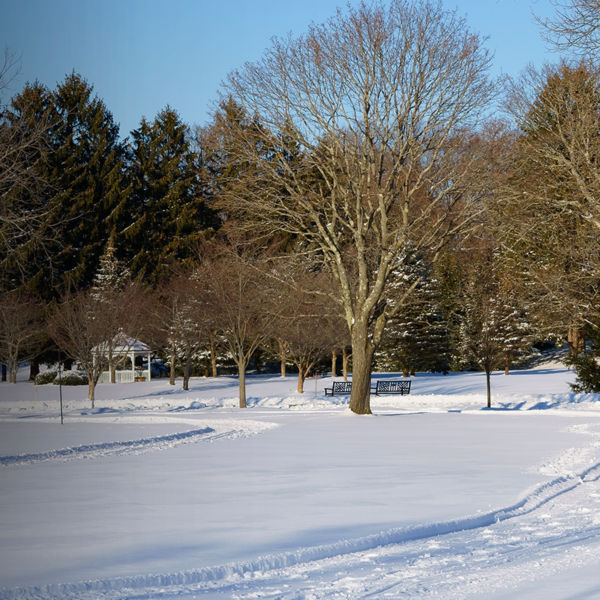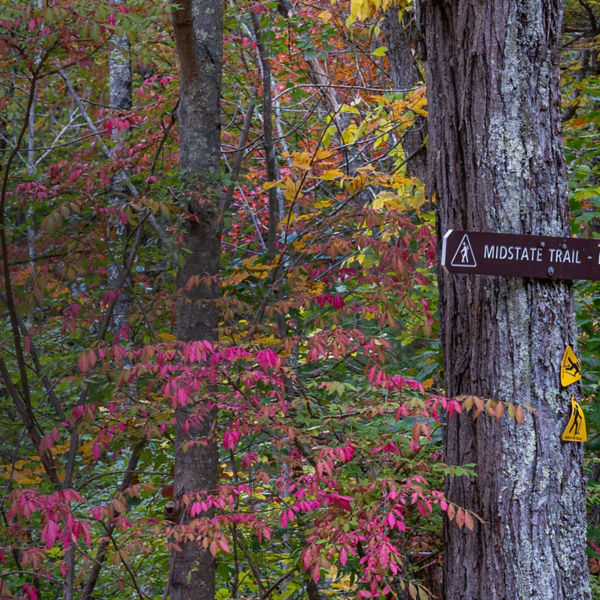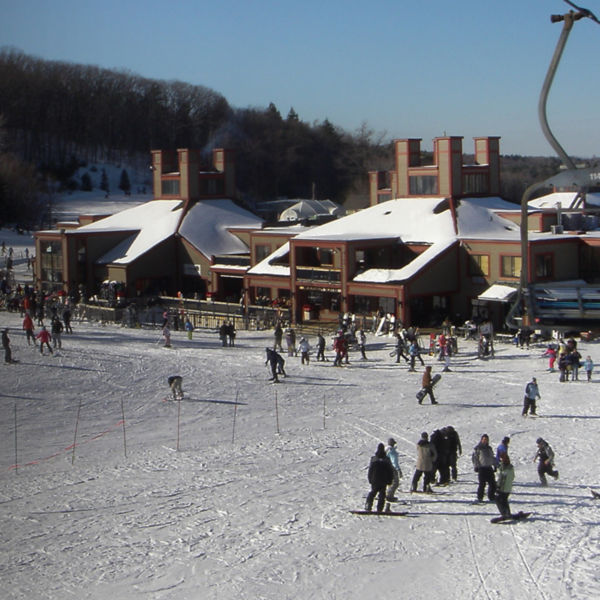1) Know the plowing schedule.
“One of the pros of running in Boston is that it does snow a lot, but the city and surrounding towns tend to be good about plowing and salting,” Melly says. Roads typically see the plow before bike paths do, so he advises choosing quiet streets with wide shoulders when the snow’s really coming down. “The Carriage Path in Newton is one of the best spots when it’s snowing,” he recommends. “It’s a separated side-road that runs along the Boston Marathon course, and it’s usually plowed and protected from cars.” The paths along the Charles River are usually his second choice in heavy snows, as they get cleared and salted relatively early, too.
2) Don’t be afraid to overdress.
Melly recommends erring on the side of caution when it comes to your layering strategy. “I wouldn’t be afraid to over-layer, especially if you have trouble getting out the door when it’s really cold,” he says. A good guideline: You should be uncomfortably warm standing around your house or apartment, comfortable when you start running, and a little hot once you really hit your stride. To make that happen, Melly usually wears a long-sleeved base layer, neck gaiter, sweatshirt, and double-layered hat. He recommends adding gloves or a wind-blocking layer as needed.
3) Work around the sun’s schedule.
Melly is the first to admit that he’s no morning person, but he calls morning runs “a necessary evil during winter, especially if you’re doing something faster or harder.” When he can, he’ll either wake up early or squeeze in a run at lunch, rather than waiting until after work when the daylight’s long gone.
4) Wear reflective gear.
If you don’t have the kind of job where lunchtime runs are an option, you might get stuck jogging along busy shoulders in the dark. That’s OK, Melly says—you have to work with what you’ve got—but you’ll need some reflective gear if you want to stay safe on nighttime runs in the city. Consider adding an arm cuff, a headlight, or simply a jacket with reflective elements. “I’ll also plan routes around places I know have good streetlights,” Melly says. “You want the footing to be well-lit so you don’t slip on black ice.”
5) Make friends with a morning person.
“I’m a big believer in positive peer pressure,” Melly says. “I’m infinitely more likely to follow through with a run at 6:30 in the morning if I make plans to meet someone.” Accountability isn’t the only benefit, he adds: A little camaraderie can go a long way when the weather’s bad.
6) Find a community.
“In Boston, we’re lucky that there’s a lot of community run programming,” he says. “Going to a regular group run or just having other people to run with is a really good way to stumble sideways into consistency.” His recommendations: Tracksmith Community runs (Wednesday evenings) and Heartbreak Hill Running Company group runs (Tuesdays, Thursdays, and Saturdays). “I think people can sometimes forget that running can be really fun,” Melly says, “and finding other people who love the sport is a great way to remind yourself—and extend that sense of joy and excitement to a broader community.”
7) Save up your favorite podcasts.
If sharing your ‘me-time’ with a bunch of strangers sounds like a drag, we hear you. Solo running is a great way to decompress, and there are plenty of strategies to stay motivated even without accountability buddies. “I’m a big listener of podcasts, and sometimes I’ll save an episode that I’m looking forward to for a run,” Melly says. The same goes for an audiobook, or a new album you can’t wait to listen to.
8) Protect those baby blues.
Boston’s plentiful snow reflects sunlight, which makes eye and skin protection paramount in the winter, especially if you’re fair-complexioned. “Find a good sunscreen that works for you, and wear sunglasses if that’s something you need,” Melly says. “I’m personally a big fan of Goodr sunglasses because they’re designed for active wear, but they’re pretty inexpensive so if you break them it’s not a big deal.”
9) Head for the hills.
Deep winter is not the time for speed work. When your muscles are cold and there’s snow on the ground, you’re going to be hard-pressed to get accurate times. For that reason, Melly tends to prioritize hill workouts, progression runs, and fartleks, which are more about putting in effort than hitting specific splits. “With hill workouts, particularly,” he explains, “you can build up a lot of strength without having to worry about having access to a track or running really fast in snowy conditions.”
10) Be kind to yourself.
Remember to cut yourself some slack if you don’t have the perfect workout, or if a surprise snowstorm derails your plans. “Flexibility is always key,” Melly says. If all you have access to is a treadmill or a bike trainer, so be it. Even swimming laps in an indoor pool is a great way to stay moving if you can’t get outside. “Especially in the winter, making ‘the perfect’ the enemy of the good is only going to come back to bite you,” Melly says. “Being adaptable and flexible is the secret to success.”




































